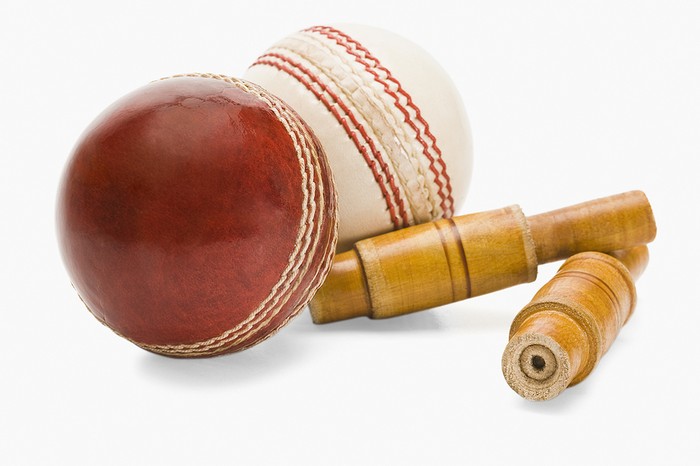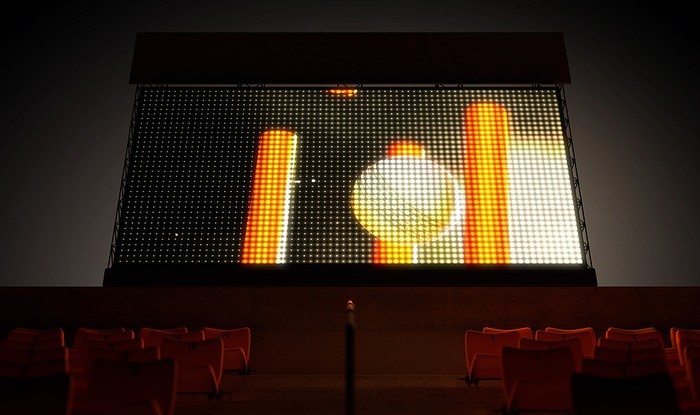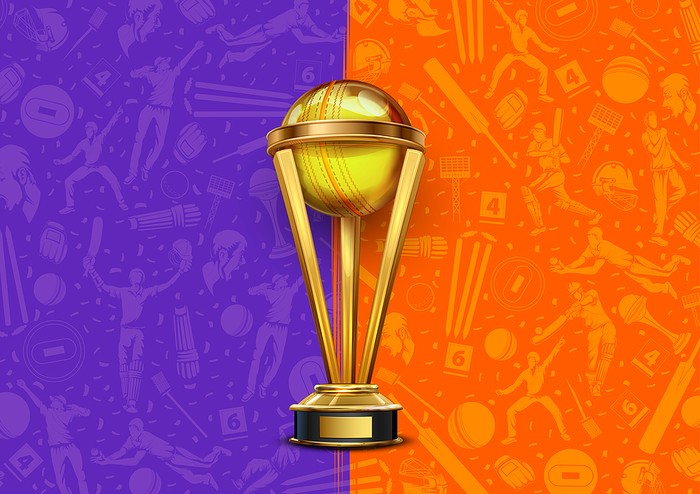 Cricket has a reputation among some people as a sport that goes on for days and days and that can still end up without a winner. This is true to an extent when it comes to Test match cricket, but certainly not when it comes to the many varieties of limited overs cricket that exist, variously called white-ball cricket or short-form cricket. Having said that, even limited overs matches can end without a winner (we’ll come back to that later), but in contrast to Test matches, limited overs games will only take place on a single day. Indeed, the shortest professional limited overs cricket matches can be done and dusted in around two and a half hours!
Cricket has a reputation among some people as a sport that goes on for days and days and that can still end up without a winner. This is true to an extent when it comes to Test match cricket, but certainly not when it comes to the many varieties of limited overs cricket that exist, variously called white-ball cricket or short-form cricket. Having said that, even limited overs matches can end without a winner (we’ll come back to that later), but in contrast to Test matches, limited overs games will only take place on a single day. Indeed, the shortest professional limited overs cricket matches can be done and dusted in around two and a half hours!
In this article, we’ll first explain in more detail what limited overs cricket is and we’ll run through the main formats of professional cricket that fall under the “limited overs” umbrella. We’ll then give brief details about the top limited overs cricket competitions and tournaments for both international and domestic teams. Finally, we’ll give you a few choice statistics and records you can use to impress your cricket-loving grandad, or simply to create new, and very possibly pointless, neural pathways.
Defining Limited Overs Cricket

A limited overs cricket match, as the name suggests, has a maximum number of overs or – in the case of 100-ball cricket – balls, each side must face. While Test match cricket and first-class cricket matches see each side having two innings, in limited overs cricket each side has just one innings each. The exact number of overs/balls each side must face depends on the format of the game in question (see below).
There are many similarities between limited overs cricket and first-class/Test cricket, such as the majority of rules and regulations defined in the Laws of cricket. But here are the main differences between the short and long formats of the game.
Overs
- Limited Overs: A maximum number of overs/balls each side faces is defined
- First Class/Test: There is no limit to the number of overs a side faces in each of their innings
Match Length
- Limited Overs: Limited to one day (duration dependant on exact format). Note that a second day is sometimes set aside as a reserve day in case rain or some other reason means play hasn’t been possible on the scheduled day
- First Class/Test: Usually at least three days, up to five (though longer Test matches have happened in the past)
Innings
- Limited Overs: Each side has one innings
- First Class/Test: Each side has two innings
Bowlers
- Limited Overs: Each bowler is limited to a maximum number of overs/balls in a given match
- First Class/Test: There is no limit to the number of overs a bowler can bowl in a given innings/game
Ball
- Limited Overs: White balls are usually used
- First Class/Test: Traditional red balls are usually used; balls are can be replaced with new balls after having been used for 80 overs or more
Fielding restrictions
- Limited Overs: Various fielding restrictions apply (on top of standard Laws of Cricket) that differ based on the format, for example, a maximum number of fielders “outside the circle”
- First Class/Test: No restrictions beyond those specified by the standard Laws of Cricket (for example, no fielders are allowed on the pitch before a shot has been played)
Match Result
- Limited Overs: Matches are won by the side that score more runs than their opponents after the defined number of overs (or by bowling the other side out before they score enough runs to win or tie). Matches can also be tied if both sides end with exactly the same score, but there is often some kind of “tiebreaker” such as a Super Over (see below) to split the sides
- First Class/Test: Matches are won by the side that scores more runs than the other after two innings, i.e. they have to have bowled out their opponent in their second innings. If either side has not been bowled out or declared in their second innings, the match is drawn. Ties are possible in Test cricket but they are very rare, there has only two in history
The Different Formats Of Limited Overs Cricket

As mentioned, there are various format that fall into the limited overs category. Here we give a brief outline of the main ones played in professional cricket.
- List A Cricket – The limited overs equivalent of first-class cricket, and covers both international and domestic games that are played over a single day usually with each side facing 50 overs, though this often varies from 40 to 60 depending on the competition in question.
- One Day Internationals (ODI) – the international version of List A cricket (in a similar way that Test matches are the international version of first-class cricket), ODIs are usually limited to innings of 50 overs per side.
- Twenty20 (T20) Cricket – As the name suggests, each side faces 20 overs. T20 is played by both international and domestic sides and there are various competitions and series for each.
- 100-Ball Cricket – Another format that is given away by the name, each side faces 100 balls with “overs” that last five balls instead of the usual six.
- Other Variations – there are various other limited overs formats that have sprung up from time to time including T10 (10 overs per innings) and Ninety-90 with each side facing just 90 balls in their innings.
Can Matches End In A Draw?

As mentioned above, limited overs matches do not end in draws. It is possible for them to end in a tie but most limited overs competitions will have some form of tiebreaker to ensure that a winner is declared. Here are a couple of popular tiebreaker options utilised should both sides score the same number of runs:
- Super Over – Each side faces a single additional over and the side that scores the most runs from that over is declared the winner (the official result may still be recorded as a tie and bookies will pay out on that result for bets placed on the main match winner market where a tie was offered). If the sides are still tied after one Super Over, they have another each until one or other side wins, or the match may be awarded to the side with the greater number of boundaries.
- Bowl-out – Bowlers from each side bowl at unguarded wickets and the side whose bowlers hit the wickets the most will be declared the winner. Often five bowlers from each side are given two balls each, though the specifics can vary between competitions.
- Number of Boundaries – Traditionally, the winner of a tied match would be the one who scored the most boundaries, but the powers that be thought the other options would be more exciting to watch (which is true!).
- Fewest Wickets Lost – The other traditional method of deciding one-day games where the scores were level was awarding the victory to the side that had lost fewest wickets. This is rarely, if ever, used now in modern, professional cricket.
What If Rain Stops Or Interrupts Play?

If rain causes disruption to Test matches to the extent that neither side has enough time to win the game, it will simply end in a draw. If rain disrupts a limited overs game, things are a little different. It can get rather complicated but depending when rain falls and for how long, there is a system that can determine revised targets for one or both sides.
This is known as the Duckworth-Lewis-Stern method (formally the Duckworth-Lewis method). We go into detail about it elsewhere on the site, so we’ll not delve too deeply. But essentially it is a statistical analysis that takes into account the time (i.e. number of overs) lost to rain and the number of wickets a side has remaining to set a revised target that – in theory – give both sides an equal chance of winning the game.
What Are The Top Limited Overs Cricket Competitions?

As Test matches usually take five days, many crickets fans simply don’t have time to watch a full match. And though some people are quite happy to attend a single day of a clash, other would rather see a side win or lose while they are in there. Hence limited overs matches have proved very popular, especially with the various innovations in formats that have – in the eyes of many – increased the levels of excitement games can produce. Here we go through some of the most popular limited overs tournaments and competitions around.
International Competitions
As well as the main One Day International and Twenty20 series that are regularly played between Member Nations of the ICC there are various tournaments that allow sides to strive for limited overs glory.
Cricket World Cup
The ICC Men’s Cricket World Cup (there’s also a women’s version), is the pinnacle of ODI cricket for international sides and has been contested since 1975. It takes place every four years and though the tournament format has changed a lot over the years, the 2019 World Cup featured 10 sides that all played against one another before the top four sides went into the semi-finals. The number of teams is set to increase to 14 for the 2027 and 2031 World Cups.
West Indies won the first two World Cups, with India, Australia, Pakistan and Sri Lanka winning the subsequent tournaments before the Aussies won three in a row from 1999 to 2007. India won in 2011 before Australia added their fifth title in 2015; and then England won in 2019 in the most dramatic fashion imaginable (to someone with a very good imagination and idea of cricket drama!).
T20 World Cup
The swift rise in popularity of T20 cricket since the first international match in that format in February 2005 led to the first T20 World Cup in 2007. This tournament tends to take place every two years (rather than the four-year intervals of the ODI World Cup), though this interval has varied for different reasons over the years. Initially the tournament included 12 teams though this was expanded to 16 nations in 2014 and is set to rise again to 20 teams from 2024. The first five tournaments each had a different winner (India, Pakistan, England, West Indies and Sri Lanka), since when West Indies have won it for a second time and Australia have also been victorious.
Domestic Limited Overs Competitions
When it comes to domestic competitions, there are loads of different limited overs options for fans to enjoy from all around the world. Here are some of the biggest and best.
Indian Premier League (IPL)
Widely regarded as being at the forefront of the rise in popularity of T20, the IPL brought new levels of glitz, glamour and excitement to cricket from its inception in 2007. Based on a league of 10 teams based in various cities around India, the annual player auctions and high earning potential for players have meant that many of the world’s best players have been attracted to the IPL, thus providing cricket that is of a very high standard and often sees a very high number of boundaries. In a country where cricket is a religion, there is no question that T20 is a new God and most Indian fans favour the flowing boundaries and fast nature of this format over Test cricket.
Big Bash League (BBL)
The original Twenty20 Big Bash actually started more than a year before the first edition of the IPL and included six teams based on the six states of Australia. It didn’t quite have the razzmatazz of the IPL and it was rebranded as the Big Bash League (BBL) in 2011 and changed to eight city-based franchises. For cricket fans in the southern hemisphere especially, it is a massive deal. It doesn’t quite have the same international appeal as the IPL has managed to garner but its high-octane matches are a big draw for many fans of the sport.
The Hundred
The Hundred is a more recent innovation that is based on 100-ball cricket (who’d have guessed?!) and – unlike most cricket tournaments – gives the chance for fans to watch a women’s match and a men’s match at each fixture. There are 100 balls per innings and bowlers can deliver either five or 10 consecutive balls, though each bowler can bowl a maximum of 20 balls in a match.
With it being even shorter than T20, the hope was that it would attract a younger audience – because they can’t concentrate for the extra 20 balls perhaps – and be even more exciting than the already well-established 20 over game. The first edition only took place in 2021 so it remains to be seen whether this will prove to be the case or whether it is simply too similar to T20 to make much of an impact. But it certainly shines a light on the women’s game that might not otherwise be there, so that’s got to be a positive thing.
Facts And Figures
Now we’ve been through the various aspects that explain what limited overs cricket is and the tournaments in which it’s played, let’s throw out some facts and figures that are sure to excite you at least as much as England’s 2019 World Cup victory!
- Highest One Day International Innings Total – 481/6 (England against Australia, Jun 2018, 50 overs)
- Lowest One Day International Innings Total – 35 (1. Zimbabwe against Sri Lanka, Apr 2004; 2. USA against Nepal, Feb 2020)
- Most Runs In An ODI Innings – 264 (Rohit Sharma for India against Sri Lanka, Nov 2014)
- Highest Twenty20 International Innings Total – 278/3 (Afghanistan against Ireland, Feb 2019)
- Lowest Twenty20 International Innings Total – 21 (Turkey against Czech Republic, Aug 2019)
- Most Sixes In A Twenty20 International Match – 32 (1. India v West Indies, Aug 2016; 2. New Zealand v Australia, Feb 2018)
- Most Consecutive ODI Centuries – 4 (Kumar Sangakkara against Bangladesh, England, Australia and Scotland in 2015)
